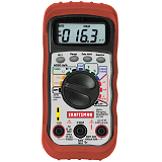Back to my vehicle. After adjusting the CVR it is running at about 50% duty cycle and cycling between 0v and 12v. The question is why the GAUGE performs differently when the CVR is grounded.
I'm wondering if I could have a short to ground inside the gauge, but am not sure how to tell. I cannot find any specs for internal resistance in the gauge.
To be clear 12v is supplied to the CVR 100% of the time and 12v is supplied to the gauge about 50% of the time.
Kevin
I'm wondering if I could have a short to ground inside the gauge, but am not sure how to tell. I cannot find any specs for internal resistance in the gauge.
To be clear 12v is supplied to the CVR 100% of the time and 12v is supplied to the gauge about 50% of the time.
Kevin








Comment